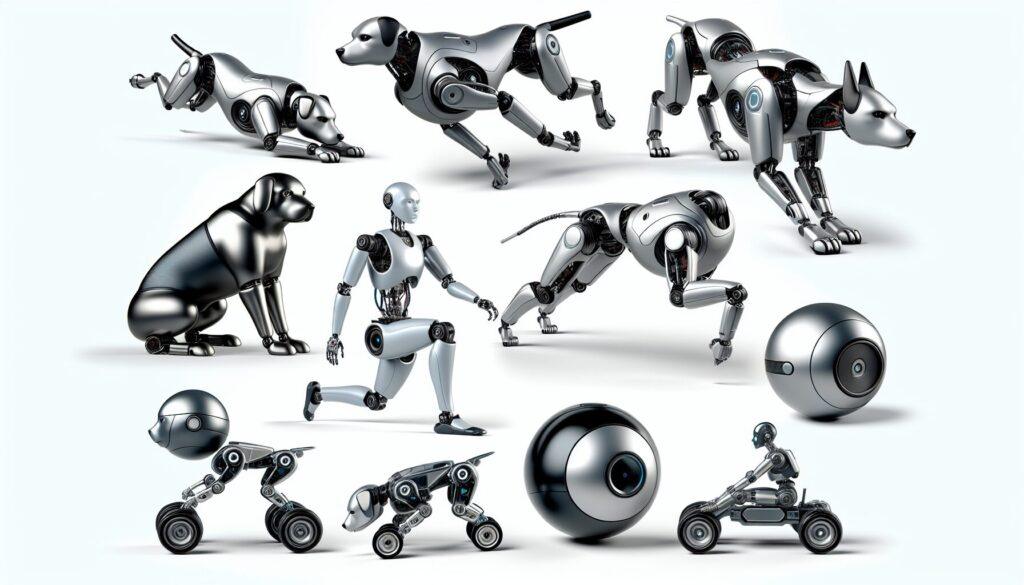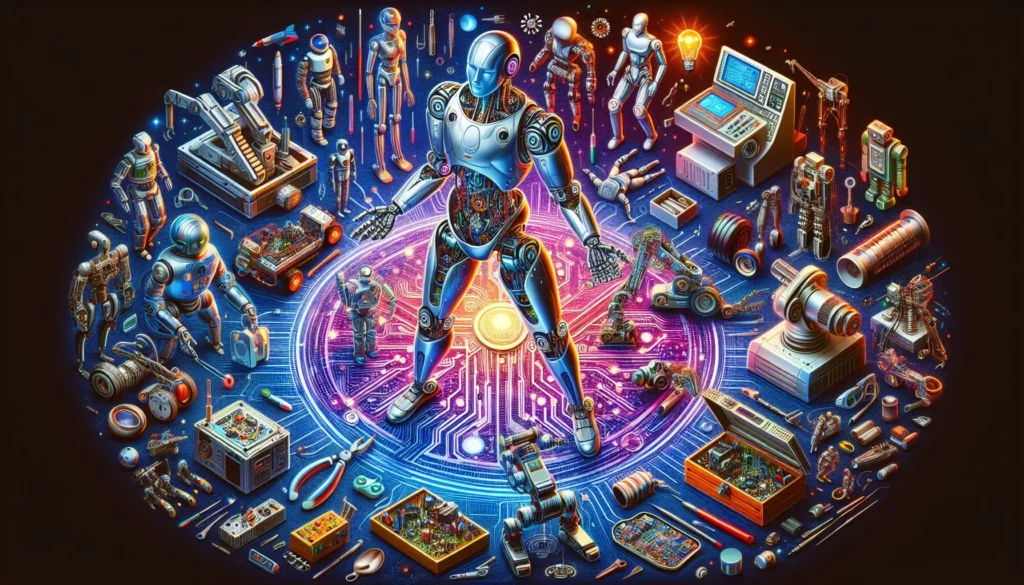Human-Robot Relationships Unveiled
In an era where technology evolves at an unprecedented pace, the relationship between humans and robots is becoming increasingly intricate. This article explores the future of human-robot interactions, examining the potential implications and benefits. We’ll address common questions and provide insights into this burgeoning field.

Q&A Section
Q1: What are the current trends in human-robot relationships?
: A1: Currently, human-robot relationships are evolving rapidly, with advancements in artificial intelligence (AI) leading the charge. Robots are becoming more capable of understanding and responding to human emotions, allowing for more natural and intuitive interactions.
This emotional AI, or affective computing, enables robots to analyze and adapt to human behaviors, creating personalized experiences that can enhance customer service, therapy sessions, and even daily companionship.
As robots become more integrated into our daily lives, the line between technology and human connection continues to blur, paving the way for a future where robots may become indispensable companions and helpers.
Human-robot relationships are successfully advancing with the integration of AI in everyday devices. Robots are now capable of performing complex tasks, ranging from household chores to providing companionship in healthcare settings. The trend is moving towards creating robots that can understand and respond to human emotions, enhancing interaction quality.
Q2: How can robots impact daily life in the future?
A2: Robots equipped with AI personalization capabilities will significantly alter the landscape of daily life by offering tailored support and assistance. They could adapt to individual schedules, preferences, and needs, streamlining tasks such as home management, personal finance, and even dietary planning.
Furthermore, as these robots become more integrated into our personal lives, they may also serve as personalized educators or therapists, providing customized learning plans or emotional support based on the user’s history and behavior patterns.
In the future, robots are expected to significantly impact various aspects of daily life. They could potentially revolutionize healthcare by assisting in surgeries or elderly care, improve productivity in industries through automation, and even become part of educational systems to aid learning.
Q3: What ethical considerations arise from human-robot relationships?
A3: Ethical considerations in human-robot relationships are multifaceted and complex. One primary concern is the potential for dehumanization, where individuals may start to prefer robotic interaction over human contact, leading to societal detachment and isolation.
Additionally, there are worries about privacy and consent, especially as robots collect and process vast amounts of personal data, raising questions about who has access to this information and how it is used. Finally, the issue of responsibility and accountability arises when robots make autonomous decisions that could result in harm, challenging existing legal frameworks and moral norms.
Ethical concerns include privacy issues, the potential for job displacement, and the need for clear guidelines on robot autonomy. As robots become more autonomous, questions about accountability and decision-making processes must be addressed to ensure ethical standards are maintained.
Q4: What role will AI play in enhancing human-robot relationships?
A4: AI will play a pivotal role in fostering deeper and more intuitive interactions between humans and robots by enabling machines to better understand and predict human needs and emotions. Through advanced algorithms and learning capabilities, AI can help robots adapt to individual preferences, thereby creating a more personalized and satisfying experience.
Furthermore, as AI continues to evolve, it will facilitate more natural and engaging communication, allowing for a level of rapport that blurs the lines between human-human and human-robot relationships.
AI is crucial in the development of smarter, more responsive robots. It enables machines to learn from interactions, adapt to user preferences, and even predict human needs. This capability will enhance the fluidity and effectiveness of human-robot collaborations.
Q5: Can robots become true companions for humans?
A5: Certainly, the potential for robots to become true companions for humans is increasingly plausible. As AI personalization advances, robots equipped with emotional intelligence can better understand and respond to human emotions, fostering deeper bonds.
These sophisticated machines could offer companionship, engage in meaningful conversations, and provide support in ways that are currently associated with human-to-human interaction, thereby redefining the concept of companionship in the digital age.
While robots can simulate companionship, true emotional bonds are complex and rooted in human experience. However, robots can provide significant emotional support, especially in scenarios where human interaction is limited, such as in care for the elderly or those with disabilities.

Conclusion
As we continue to develop AI technology, the potential for more nuanced personalization becomes apparent. By leveraging machine learning algorithms, AI can analyze a user’s preferences, behaviors, and even emotional states to provide a more tailored and empathetic interaction. This could lead to AI systems that not only understand our needs but also anticipate them, offering comfort and assistance in a manner that feels increasingly genuine and human-like.
The future of human-robot relationships holds immense potential, promising advancements in technology that could reshape how we live and work. As we navigate these developments, it is essential to balance innovation with ethical considerations to foster a harmonious coexistence. By understanding the possibilities and challenges, we can better prepare for a future where humans and robots coexist seamlessly.
Table: Potential Applications of Robots
| Application Area | Examples of Use | Impact |
|---|---|---|
| Healthcare | Surgical assistance, elderly care, therapy bots | Improved patient outcomes, cost reduction |
| Industrial | Automation of manufacturing, logistics | Increased efficiency, reduced human error |
| Education | Teaching aids, personalized learning | Enhanced learning experiences |
| Domestic | Cleaning robots, smart home assistants | Time-saving, convenience |
In the realm of healthcare, AI personalization is revolutionizing patient care through predictive analytics and personalized treatment plans. By analyzing vast datasets, AI can identify patterns and suggest preventative measures tailored to individual health profiles, leading to early intervention and better health outcomes.
Moreover, in the retail sector, AI-driven personalization is transforming the shopping experience by offering recommendations based on consumer behavior, thus streamlining the decision-making process and enhancing customer satisfaction. For further exploration on this topic, visit MIT Technology Review.
Beyond merely suggesting products, AI personalization engines are now sophisticated enough to tailor the entire customer journey, from initial engagement to post-purchase follow-up. By analyzing vast datasets, these systems can predict customer preferences with uncanny accuracy, delivering targeted content, promotions, and interactions across multiple channels.
This level of customization not only boosts conversion rates but also fosters brand loyalty, as customers come to appreciate a shopping experience that feels uniquely curated to their individual tastes and needs.
For a deeper dive into how AI is reshaping customer journeys, consider reading insights from the Harvard Business Review. This article aims to provide a comprehensive overview of human-robot relationships, offering insights and encouraging readers to contemplate the future implications.


